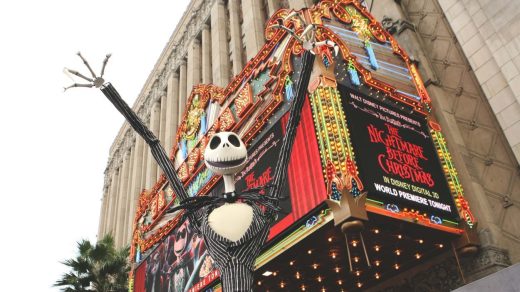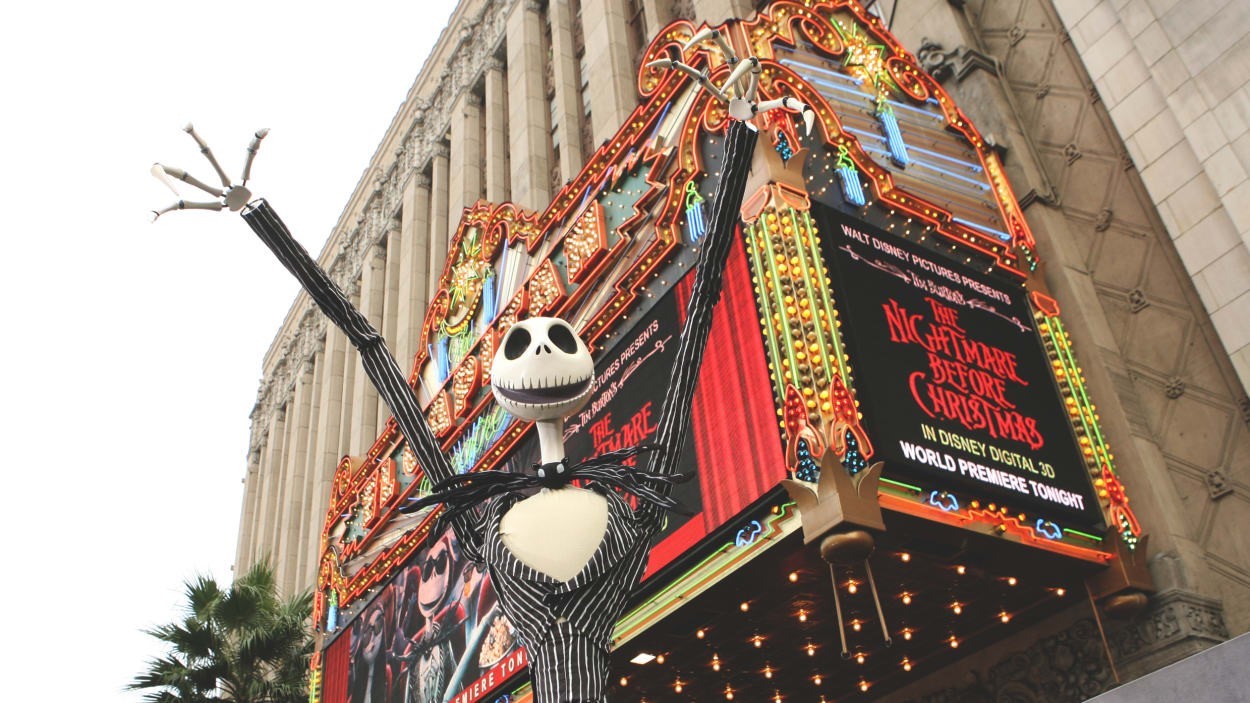Why ‘The Nightmare Before Christmas’ will never die
The Nightmare Before Christmas is kind of an anti-Disney movie. Sure, it’s produced by Walt Disney Studios, and you can find it on the Disney+ streaming service, and its characters can be found at the film studio’s namesake theme parks. But Disney has always kept the film at arm’s length—it was originally released under its Touchstone Pictures label, a defunct subsidiary that housed adult titles like Pretty Woman, Signs, and Sister Act. “They were afraid it might hurt their brand,” Nightmare director Henry Sellick recently told The New York Times. Given that the movie centers on a plot to kidnap Santa Claus and hijack Christmas for an anthropomorphic skeleton’s own self-aggrandizement, Sellick’s admission comes as no real surprise.
What is surprising, though, is that Nightmare has stayed as a cultural touchstone each successive Halloween. Even now, on the 30th anniversary of its U.S. release, The Nightmare Before Christmas feels contemporary and relevant. The film is enjoying a fresh theatrical run, along with screenings featuring original cast members and a live orchestra at the Hollywood Bowl and themed events at Disney parks and cruises. And forget Disney-sanctioned events: Walk around your neighborhood and there’s a good chance you’ll spot an inflatable Jack Skellington sprawled out on a front lawn. Peruse your shopping mall’s Hot Topic and you’ll see a cardigan bearing the likeness of the film’s antagonist, Oogie Boogie.
In 2023, The Nightmare Before Christmas remains a cultural and commercial mainstay, one that successfully bridges the autumnal gap between spooky Halloween and effervescent Christmastime.
The Nightmare Before Christmas is staggeringly gorgeous with stop-motion animation that still impresses today. The set scenery, the character design, the gloomy colors, the camera angles, the score, and the lyrics—all deliciously haunting, eerie but never scary.
Still, it’s far darker than almost anything else that could be considered part of the Disney Renaissance lineup of the 1990s—more reminiscent of producer Tim Burton’s oeuvre than anything from the Disney vault.
Not only are the aesthetics out of whack with those of typical tales of Disney heroes, villains, princes, princesses, and monsters, the movie’s message is also a departure. While a typical Disney movie finds characters breaking out of their molds to reach their full potential, the Nightmare’s message is more akin to a classical Greek warning against hubris.
Jack Skellington, despite holding high status as Halloween Town “Pumpkin King,” longs for something more from life. (That’s familiar.) In his stupor, he wanders to a crossing in the woods where various trees mark portals into other holiday-themed lands—there’s one for St. Patrick’s Day, Valentine’s Day, and Thanksgiving. He’s sucked into a Christmas village where he’s enamored by the holiday—but still doesn’t actually understand it. Jack takes it upon himself to kidnap Sandy Claws, as he calls him, and proceeds to make a mess of someone else’s holiday. The Nightmare Before Christmas is ultimately an ode to staying in one’s lane—doing more will certainly just mess things up for someone else. Jack’s journey of self-rediscovery is nearly disastrous for the holiday of Christmas—as well as its celebrants.
The film is smart and mature, but isn’t without flaw: Notably, its villain Oogie Boogie is marred by accusations of unsubtle racism—at best some kind of stereotypical dice-loving Voodoo king and at worst a nod to minstrel shows of yore.
But that hasn’t prevented the movie from grossing $99 million worldwide so far over 10 theatrical releases, and spawning video games, comics, graphic novels, and a whole lot of merchandise throughout the years.
There’s an undying debate about whether The Nightmare Before Christmas is a Halloween movie or a Christmas movie.
It’s simultaneously neither and both. It’s a movie that belongs to the autumn, an ode to tricolor leaves, fleece coats, and light sweaters. Though it was released in the run-up to Halloween, and often celebrated (and written about) on this holiday, Nightmare is best enjoyed as the weather turns, at the precise moment when you can find Halloween displays lazily left up and next door to all-to-early Christmas lights. Perhaps, as MEL Magazine once declared, it’s actually a Thanksgiving movie.
Whenever you enjoy it best—that is, if you enjoy it at all—The Nightmare Before Christmas has shown no signs of dying, a reluctant Disney hit whose staying power seems to surprise its own studio with each passing year.
Disney is finally leaning into its dual-holiday success, even if it may never claim Jack Skellington and Sally among the pantheon of Disney’s 90s royalty—Belle and the Beast, Aladdin and Jasmine, Simba and Nala, even Hercules and Megara. But with audiences, it’s clear that Nightmare will follow their Halloweens, their Christmases, and the limbo in between.
(21)



